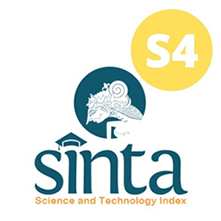Electronic Infusion Flow Regulator with Occlusion Detection
Abstract
Infusion is one medical equipment that provides several fluids into the body through a needle into a vein to replace fluids or food substances lost from the body. The use of manual infusion to determine the number of drops given to the patient and the calculation manually. The purpose of this research is to design an automatic infusion flow control device equipped with occlusion detection. This module consists of an Arduino Mega 2560, DC motor (stepper NEMA 17), optocoupler module, 4x4 keypad, and TFT. Infusion drops are detected by the optocoupler sensor. The microcontroller will process the detection results and send a DC motor command to move according to the settings entered. The unit of flow rate used in the module is ml/min. After measuring using an IDA calibration device with the Fluke brand type IDA 4 plus on the occlusion parameter, the average time is 41 seconds and the results of the flow rate have the largest deviation of 0.15 ml/min at the time setting of 6 hours and the volume of 500. While the smallest deviation is 0.12 ml /min on setting time 4 hours and volume 500 ml. From the results of measurements that have been carried out, this module is expected to help nurses regulate the infusion. The results in the future this module can be developed again with the appearance of the flow rate results can be directly displayed without having to wait for the drops to stabilize.

This work is licensed under a Creative Commons Attribution-ShareAlike 4.0 International License.
Authors who publish with this journal agree to the following terms:
- Authors retain copyright and grant the journal right of first publication with the work simultaneously licensed under a Creative Commons Attribution License that allows others to share the work with an acknowledgement of the work's authorship and initial publication in this journal.
- Authors are able to enter into separate, additional contractual arrangements for the non-exclusive distribution of the journal's published version of the work (e.g., post it to an institutional repository or publish it in a book), with an acknowledgement of its initial publication in this journal.
- Authors are permitted and encouraged to post their work online (e.g., in institutional repositories or on their website) prior to and during the submission process, as it can lead to productive exchanges, as well as earlier and greater citation of published work (See The Effect of Open Access).











